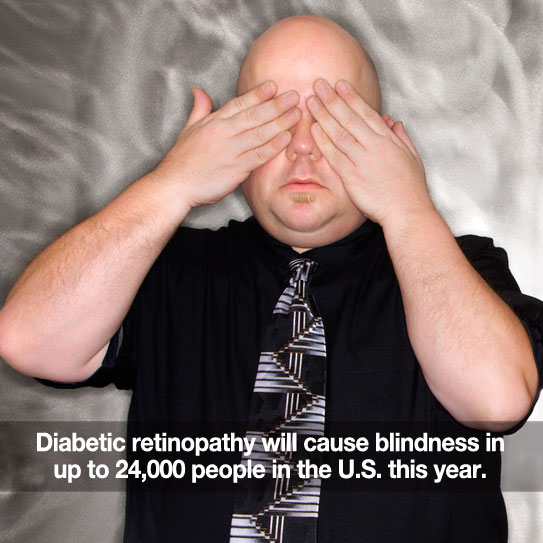Do You Have Diabetes? A Little Knowledge Can Help Prevent Blindness

People with diabetes know how important it is to monitor their condition. However, many people with diabetes know very little about a condition called diabetic retinopathy—the leading cause of blindness in the United States.
This Isn’t An “Old People’s” Disease
Diabetic retinopathy accounts for 12% of all new cases of blindness in the United States. It is also the leading cause of blindness for people ages 20 to 64 years. Both type 1 and type 2 diabetes can cause this condition.
Because diabetes creates unusually high levels of blood sugar, it causes blood vessel damage… And that includes the blood vessels flowing to the retina. This damage can cause retina tissue to swell.
Diabetic Retinopathy Symptoms
- Seeing spots and floaters, or blurred vision
- Dark or empty spots near the center of your vision field
- Double vision or difficulty seeing at night
- Eye pain
What Can Be Done To Help?
Because diabetic retinopathy is hard to detect during its early phases, it’s VERY important for people who have diabetes to get a comprehensive dilated eye exam at least once a year. We’ll be able to see the back of the eye where the retina is located, and check for changes that could be linked to diabetic retinopathy.
[iframe http://www.youtube.com/embed/X17Q_RPUlYo?rel=0 620 349]
If diagnosed, monitoring diabetic retinopathy through frequent eye exams and blood sugar control are the most common treatments. For advanced stages of the disease there are other options including laser treatment and a procedure called vitrectomy where harmful fluids in the eye are replaced with clear fluids to help maintain eye health and shape.
Remember, Early Detection Is Key To Helping Save Vision
If you have diabetes—or if someone you love or care for has diabetes—talk with us about the condition and about scheduling eye exams.
Please Share This Information!
Mom was right… An ounce of prevention really is worth a pound of cure. Make sure these problems are detected early. And thanks for making our practice your lifelong eye care partner. We appreciate having you as our valued patient!
